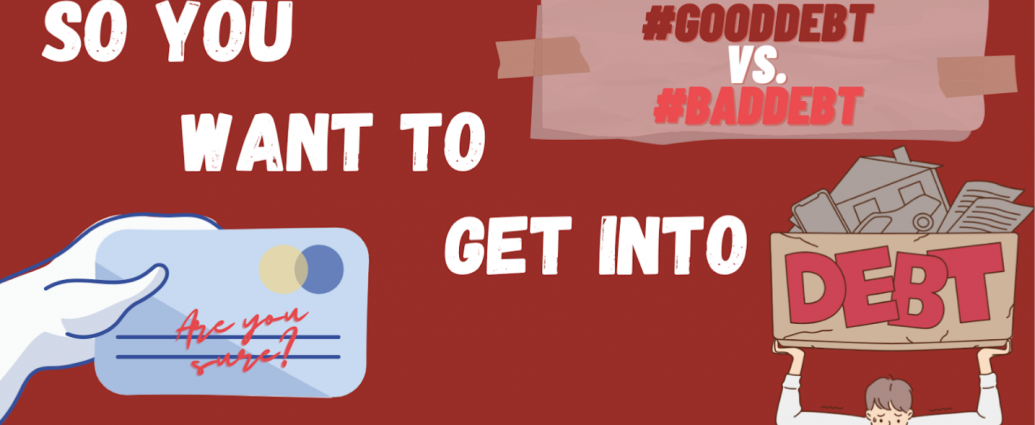Author: Aaron Jun Kit Wu, Graphics: Acasia Giannakouros
The BRB Bottomline:
Debt is stereotypically perceived as an aspect of finance that should be avoided at all costs. The fear of owing overwhelming sums of money encourages individuals to purchase commodities using cash as opposed to loans. However, when utilized properly, debt could potentially generate more profit than simply investing with cash. This article explores the opportunities that debt creates in both the real estate and stock market.
Debt is defined by the Merriam-Webster Dictionary as “something owed” or “a state of being under obligation to pay or repay someone or something in return for something received.” Debt is present in transactions ranging from credit card spending to real estate mortgages. In essence, whenever you use money that doesn’t belong to you to purchase a commodity of any sort, debt is present. Debt is notoriously known for being the single reason for countless bankruptcies and financial mishaps. Notably, around 80% of Americans have consumer debt, averaging out to $38,000 per citizen. As a result, when many people hear the word “debt,” the image of financial struggle or insecurity comes to mind. However, in actuality, debt is one of the strongest assets that countless successful individuals and businesses use to increase their profits.
The debt that most individuals think of or refer to is debt that is used to purchase depreciating assets. A depreciating asset can generally be classified as an object that loses its initial purchase value steadily over time. Electronics, new cars, and groceries are all common examples of depreciating assets. However, when debt is strategically leveraged to fund investments, it has a high potential to generate wealth for the investor.
So what does all of this mean? It means that debt is good.
Mo’ Money, Mo’ Mortgages
Take a hypothetical scenario. You have an endowment of $1 million to purchase a home for a net price of the same value. You are then presented with two options: pay off the house upfront with cash debt-free—or alternatively, put a standard 20% down and take out a loan of 4.8% interest rate for the next 15 years.
Which option would you choose?
You might think that option one is the better choice, thereby paying off the house without being bogged down with debt. However, from an investing perspective, option two would be the better choice. With a standard 20% down for each $1 million property, someone could purchase five properties each with 20% down. After 15 years, the individual would have five real estate properties, as opposed to just one.
Houses are prime examples of properties that appreciate and can thereby be used to turn a profit. The median house price in the United States rose from $257,400 to $428,700—a 67% increase—in the 15-year span stretching from 2007 Q1 to 2022 Q1. This percentage increase is far greater than the 36.93% inflation rate in the same 15-year span. Applying that figure to a potential investment portfolio of five homes each with an initial valuation of $1 million results in the portfolio’s profit amounting to $3.35 million. On the other hand, the profit that would have been made from only one such house would be just $670,000.
However, this method of investing comes with the caveat that the investor must have sufficient cash flow to be able to make the payments across all owned properties, and the real estate properties in the portfolio increase in value over time.
Borrowing Money to Place a Bet
Debt can also be applied in stock trading through the strategy of margin investing.
Margin investing is when you buy stock shares with borrowed money from a broker in addition to the money that you already have. The idea is that if the stock value increases, you will be able to sell a greater amount of shares, which would then yield a greater total profit. The Federal Reserve Board allows investors to borrow up to 50% of the purchase price. However, this strategy comes with greater risk—if the stock price decreases, you would not only lose the money that was initially yours but also have to pay for the lost value of shares bought on the margin.
Conclusion
The infamous classification of debt as an exclusively negative label stems primarily from the experiences of individuals who purchased depreciating assets using debt. The debt then increases due to compound interest while not generating any returns or asset appreciation. However, when invested carefully and strategically, debt can play to the advantage of the investors by providing them with access to capital greater than their current cash supply. Mortgages and margin investing are two forms of investment that utilize debt that historically yield great results. Debt generated from mortgages allows investors to purchase more properties with the same cash supply. On the other hand, debt generated from margin investing allows stock investors to access 50% more purchasing power than could be achieved with their initial supply of cash. In conclusion, when debt is used correctly, it allows investors to gain access to larger sums of capital for investment in both the stock and real estate markets.
Take-Home Points
- Debt, in the form of purchasing depreciating assets, has a negative impact on one’s investments and profits.
- Debt can be utilized when investing in real estate and the stock market.
- Debt gives an individual access to larger sums of money, beyond what they have in cash, to invest.


When used diligently, debt can be the most valuable asset possessed by an individual.
Great read!